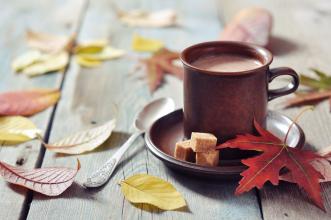Costa Rican Coffee Manor Goddess Manor introduction to Coffee producing areas in the Western Valley of the Central Mountain area
Lajas is also the first manor in Central America to start honey treatment and natural sun treatment. Tanning is a very traditional practice, which uses the least resources, but because there are too many uncontrollable factors, it is very difficult to do well. Francesca has added many innovations, such as using the sugar meter (Brix meter), which is often equipped in the wine industry, to measure the sugar content of the fruit, and to determine the best time and treatment of harvest according to the sugar content of Brix. Only those with more than 20% sweetness will be exposed to the sun. The Brix value of general fruit is 14 for apple, 12 for lemon and 18 for passion fruit, but the coffee cherry in Lajas can reach 21 / 22%.
The natural treatment process of French Sika is quite laborious. The artificially picked high-sugar coffee fruit is first placed in an African viaduct in the sun for about 10 days, and then placed in a plastic-covered greenhouse to create more direct heat and continue to dry. until the water content reaches 11.5%. The slow drying process allows raw beans to develop more natural sweetness from the inside, but it also needs to be taken care of more carefully and constantly turned. In the end, the red cherries turn black, giving off the aroma of fruitcake, black sugar and even sherry. This is the "Perla Negra"!
There are eight Costa Rican producing areas, of which Tarazu, the Central Valley and the Western Valley are recognized as the three best producing areas. Las Lajas is located in the foothills of Sabanilla de Alajuela and Poas Volcano in the Central Valley. Strictly speaking, "Lajas" is actually the name of the Chakon family processing plant. The name of the manor is Finca La Mirella, but bean bakers all over the world are also used to calling it Finca las laja.

Important Notice :
前街咖啡 FrontStreet Coffee has moved to new addredd:
FrontStreet Coffee Address: 315,Donghua East Road,GuangZhou
Tel:020 38364473
- Prev

Arabica Coffee Bean Coffee Manor introduction Arabica Coffee Manor
The origin of the Arabica species (Coffea arabica) is the Abyssini Arabica subplateau (Abyssinia, now known as the Ethiopian plateau) in Ethiopia. In the early days, it was mainly eaten as medicine (Islamic monks used as a secret medicine for physical and mental therapy or for awakening the brain), developed the habit of baking and drinking in the 13th century, and passed through Allah in the 16th century.
- Next

Rich Colombian Coffee Hope Manor introduces boutique coffee beans
Hope Manor Hope Manor has a total of four estates (Esperanza, Las Margaritas, Cerro Azul and Potosi). Its manor won the Best of Panama Best Panama Champion (2008) and runner-up (2009) *. 2012 even arranged three seats in the top ten of SCAA Coffee of the Year with three products, the incredible number 2, 3 and 7. 、 G
Related
- Does Rose Summer choose Blue, Green or Red? Detailed explanation of Rose Summer Coffee plots and Classification in Panamanian Jade Manor
- What is the difference between the origin, producing area, processing plant, cooperative and manor of coffee beans?
- How fine does the espresso powder fit? how to grind the espresso?
- Sca coffee roasting degree color card coffee roasting degree 8 roasting color values what do you mean?
- The practice of lattes: how to make lattes at home
- Introduction to Indonesian Fine Coffee beans-- Java Coffee producing area of Indonesian Arabica Coffee
- How much will the flavor of light and medium roasted rose summer be expressed? What baking level is rose summer suitable for?
- Introduction to the characteristics of washing, sun-drying or wet-planing coffee commonly used in Mantenin, Indonesia
- Price characteristics of Arabica Coffee Bean Starbucks introduction to Manning Coffee Bean Taste producing area Variety Manor
- What is the authentic Yega flavor? What are the flavor characteristics of the really excellent Yejasuffi coffee beans?

